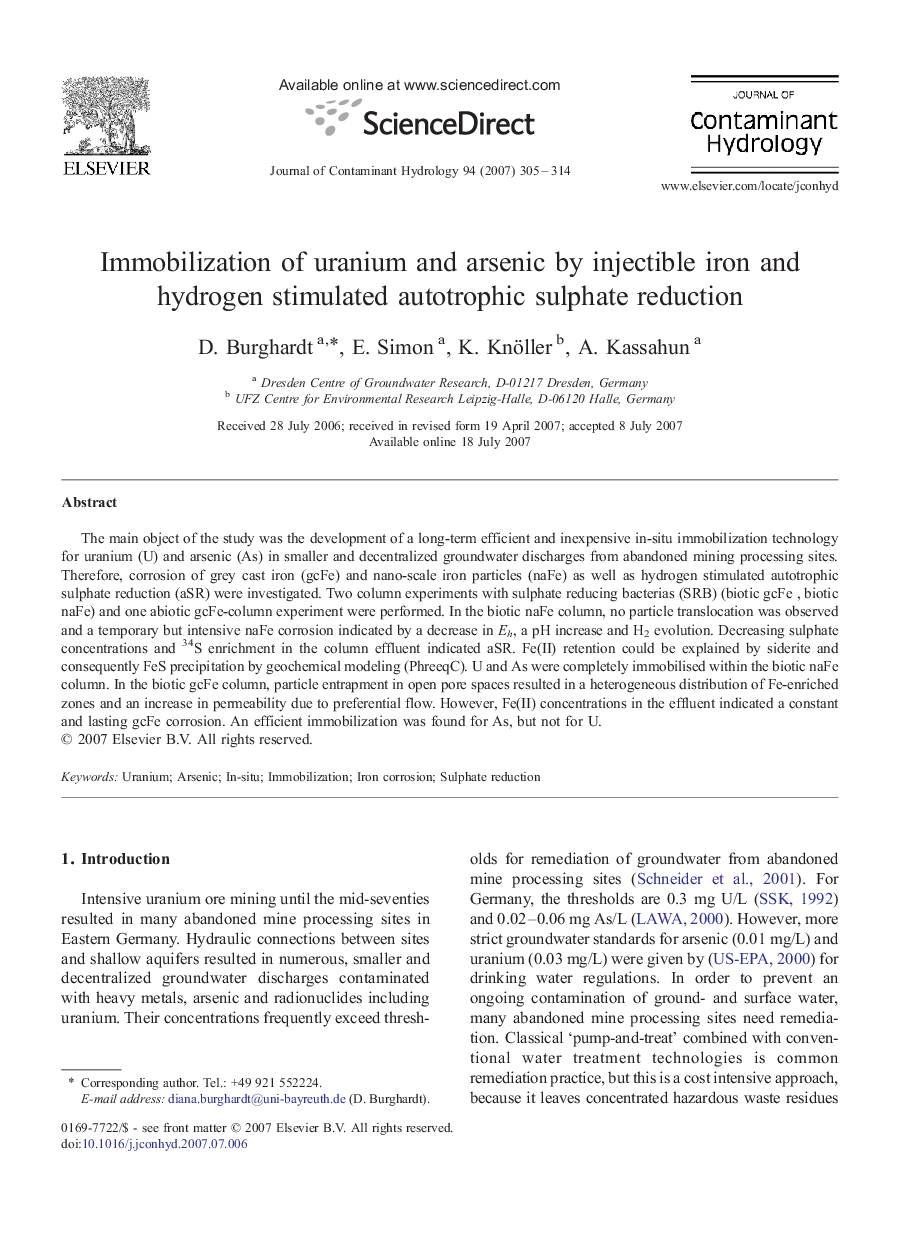| کد مقاله | کد نشریه | سال انتشار | مقاله انگلیسی | نسخه تمام متن |
|---|---|---|---|---|
| 4547528 | 1627119 | 2007 | 10 صفحه PDF | دانلود رایگان |
عنوان انگلیسی مقاله ISI
Immobilization of uranium and arsenic by injectible iron and hydrogen stimulated autotrophic sulphate reduction
دانلود مقاله + سفارش ترجمه
دانلود مقاله ISI انگلیسی
رایگان برای ایرانیان
کلمات کلیدی
موضوعات مرتبط
مهندسی و علوم پایه
علوم زمین و سیارات
فرآیندهای سطح زمین
پیش نمایش صفحه اول مقاله

چکیده انگلیسی
The main object of the study was the development of a long-term efficient and inexpensive in-situ immobilization technology for uranium (U) and arsenic (As) in smaller and decentralized groundwater discharges from abandoned mining processing sites. Therefore, corrosion of grey cast iron (gcFe) and nano-scale iron particles (naFe) as well as hydrogen stimulated autotrophic sulphate reduction (aSR) were investigated. Two column experiments with sulphate reducing bacterias (SRB) (biotic gcFe , biotic naFe) and one abiotic gcFe-column experiment were performed. In the biotic naFe column, no particle translocation was observed and a temporary but intensive naFe corrosion indicated by a decrease in Eh, a pH increase and H2 evolution. Decreasing sulphate concentrations and 34S enrichment in the column effluent indicated aSR. Fe(II) retention could be explained by siderite and consequently FeS precipitation by geochemical modeling (PhreeqC). U and As were completely immobilised within the biotic naFe column. In the biotic gcFe column, particle entrapment in open pore spaces resulted in a heterogeneous distribution of Fe-enriched zones and an increase in permeability due to preferential flow. However, Fe(II) concentrations in the effluent indicated a constant and lasting gcFe corrosion. An efficient immobilization was found for As, but not for U.
ناشر
Database: Elsevier - ScienceDirect (ساینس دایرکت)
Journal: Journal of Contaminant Hydrology - Volume 94, Issues 3â4, 7 December 2007, Pages 305-314
Journal: Journal of Contaminant Hydrology - Volume 94, Issues 3â4, 7 December 2007, Pages 305-314
نویسندگان
D. Burghardt, E. Simon, K. Knöller, A. Kassahun,